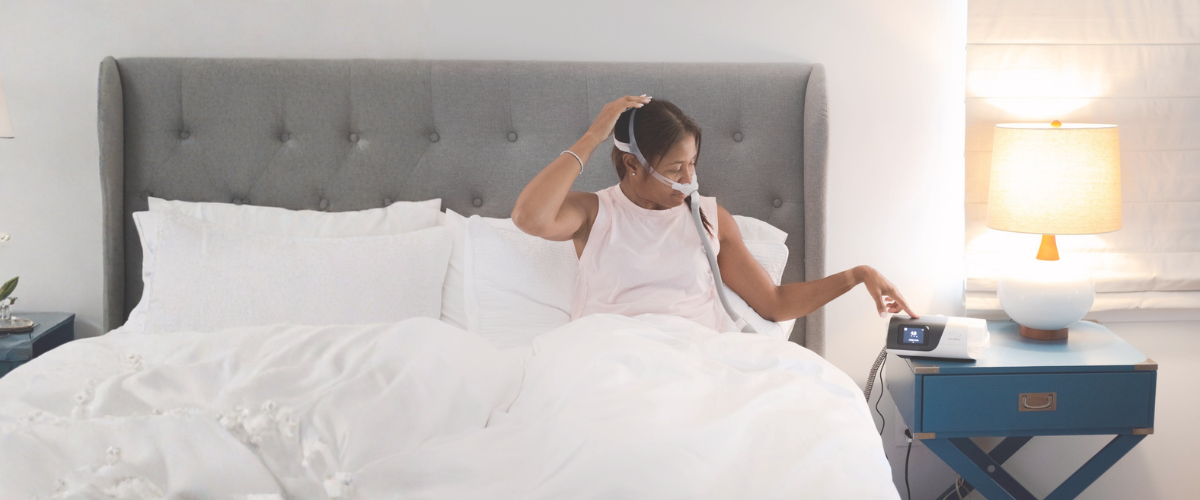Vaping, or e-cigarette use, has been on the rise in recent years. Vaping is especially popular among young adults. In a joint study from the United States Food and Drug Administration (FDA) and Centers for Disease Control and Prevention (CDC), 13.4 percent of high school students reported vape usage during the 2021 school year. A 2019 survey conducted by The American Academy of Family Physicians found vaping was significantly more popular among Millennials and Generation Z than among other age groups.
Many people see electronic cigarettes as a healthy alternative to traditional cigarettes, but as the popularity of vaping grows, it’s becoming clear this isn’t the case. The full health risks of vaping aren’t completely understood, but doctors are starting to see the effect of vaping on lung health, blood pressure, and sleep. As data about vaping continues to accumulate, we may learn it has even greater health risks.
Table of Contents
Vaping vs. Smoking Cigarettes
E-cigarettes heat a liquid (e-liquid) which creates an aerosol that is inhaled. This aerosol contains nicotine, chemicals, and flavorings. For many people, especially younger adults, the choice of flavorings is a big draw. Exact flavors depend on the brand, but there are generally a wide range of easy-to-find flavor choices available. Although herbal and other flavors of traditional cigarettes do exist, they aren’t available everywhere and flavor choices are significantly more limited.
Additionally, you don’t get any tobacco exposure when you vape. This is a large part of why vaping is seen as healthier. It’s also why some people make e-cigarettes part of their smoking cessation plan. However, there is limited research on the effectiveness of vaping as a smoking cessation method, and it is not currently recommended by the FDA or the CDC.
How Nicotine Impacts Sleep Quality
Nicotine is a highly addictive substance that can have a significant impact on sleep quality. Although many people use both traditional cigarettes and vaping as a form of stress relief, nicotine actually acts as a stimulant in the body. It keeps users on high alert, increases adrenaline levels, speeds up breathing, and raises heart rate.
Additionally, nicotine can cause inflammation in your throat, nose, and lungs. This can aggravate other respiratory conditions, especially at night. These effects make it very difficult to fall asleep or to get deep and restful sleep. They can cause a disrupted REM cycle and leave you feeling tired even after you’ve spent hours in bed. The closer to bedtime vaping occurs, the stronger these effects will be.
The Relationship Between Vaping and Sleep Apnea
Obstructive sleep apnea (OSA) is a health condition that can be aggravated by vaping. OSA already causes disruptions to restful and restorative sleep. Symptoms of OSA include:
- Snoring
- Waking up feeling excessively tired
- Nightmares
- Periods of paused breathing
- Breathing through the mouth
- Loud breathing
- Dry mouth


Vaping can cause issues with sleep, such as upper airway inflammation and disruption of your circadian rhythm. This can make snoring, and other sleep apnea symptoms, much worse. As OSA worsens, it can cause mood symptoms, such as irritability and depression, which can make people more likely to reach for an e-cigarette. This can create a cycle that’s hard to break.
Stop the Cycle
Fortunately, there are steps you can take to break the cycle. The best first step against snoring and OSA is to quit vaping. In the case of mild symptoms, quitting might be enough to resolve your OSA. It’s important to know that, at first, your nicotine withdrawal symptoms will make sleeping difficult. However, once you get past this hurdle, you’ll be able to sleep peacefully. To get help with your vaping cessation plan, check out Smokefree.gov.
Best Options for Sleep Apnea and Snoring
There are several treatments available for sleep apnea and snoring. The right treatment for you depends on the severity of your symptoms and on any other medical conditions you have. Options include:
Continuous positive airway pressure (CPAP). A CPAP machine is a small pump that directs pressure into your airways through a mask you wear over just your nose, or over your nose and mouth during the night.
Oral appliances. An oral appliance is a mouthpiece that you wear at night to keep your jaw in the correct position. The piece is custom-made for your mouth and helps to keep your airways open.
Positional aids. It can help to be positioned on your side, with your head raised, or both. There are cushions and pillows available that can help you achieve these positions comfortably.
References
Products, Center for Tobacco. “Results from the Annual National Youth Tobacco Survey (NYTS).” U.S. Food and Drug Administration, FDA, https://www.fda.gov/tobacco-products/youth-and-tobacco/results-annual-national-youth-tobacco-survey
“Survey: One in Five Young Americans Thinks Vaping Is Harmless.” Home, 23 Oct. 2019, https://www.aafp.org/news/health-of-the-public/20191023ascovapesurvey.html












